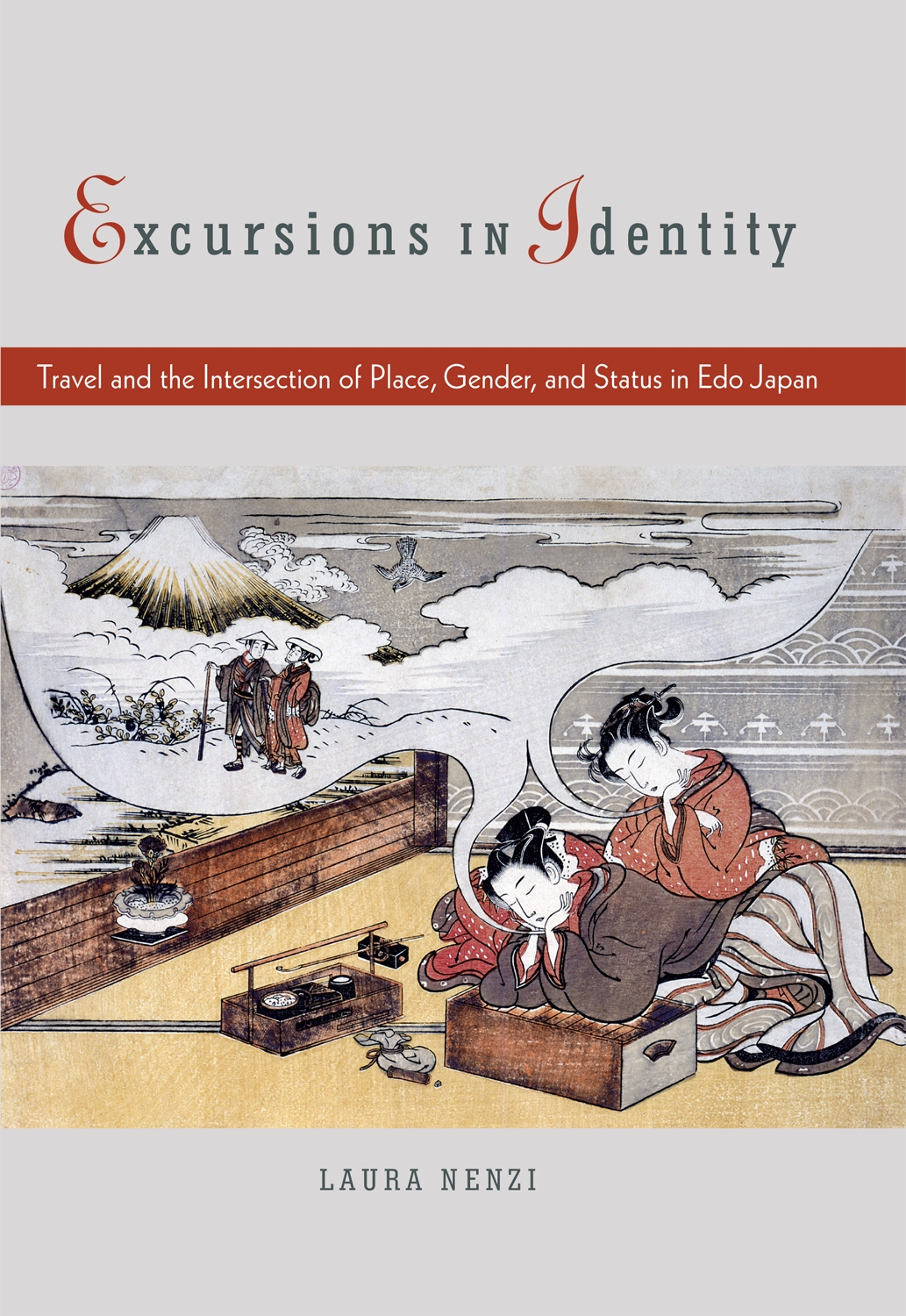Excursions in Identity: Travel and the Intersection of Place, Gender, and Status in Edo Japan
- About the Book
-
In the Edo period (1600–1868), status- and gender-based expectations largely defined a person’s place and identity in society. The wayfarers of the time, however, discovered that travel provided the opportunity to escape from the confines of the everyday. Cultured travelers of the seventeenth and eighteenth centuries wrote travel memoirs to celebrate their profession as belle-lettrists. For women in particular the open road and the blank page of the diary offered a precious opportunity to create personal hierarchies defined less by gender and more by culture and refinement. After the mid-eighteenth century—which saw the popularization of culture and the rise of commercial printing—textbooks, guides, comical fiction, and woodblock prints allowed not a few commoners to acquaint themselves with the historical, lyrical, or artistic pedigree of Japan’s famous sites. By identifying themselves with famous literary and historical icons of the past, some among these erudite commoners saw an opportunity to rewrite their lives and re-create their identities in the pages of their travel diaries.
The chapters in Part One, “Re-creating Spaces,” introduce the notion that the spaces of travel were malleable, accommodating reconceptualization across interpretive frames. Laura Nenzi shows that, far from being static backgrounds, these travelscapes proliferated in a myriad of loci where one person’s center was another’s periphery. In Part Two, “Re-creating Identities,” we see how, in the course of the Edo period, educated persons used travel to, or through, revered lyrical sites to assert and enhance their roles and identities. Finally, in Part Three, “Purchasing Re-creation,” Nenzi looks at the intersection between recreational travel and the rising commercial economy, which allowed visitors to appropriate landscapes through new means: monetary transactions, acquisition of tangible icons, or other forms of physical interaction.
- About the Author(s)
-
Laura Nenzi, Author
- Reviews and Endorsements
-
- In this fine study Nenzi amply demonstrates that the investigation of mobility and movement is indeed an excellent way to explore the structures and evolution of a society.
—International Institute of Asian Studies - Laura Nenzi’s fascinating work bridges visual and narrative representations of traveling with social history and views of traveling from below. She brings to light palpable details on the mechanics of traveling as a means of overturning socialconventions and speculates on their effect on self-transformation. Her discussion of the transformatory capacity of women’s traveling and place commodification are particularly notable contributions to the field and a delight to read. Her delving in grounds of both literary and visual studies is to be endorsed. This kind of interdisciplinary approach is absolutely necessary in the context of the Edo period’s cultural production that knew no division between the two.
—Jilly Traganou, Parsons The New School for Design - Excursions in Identity provides a new understanding of familiar material by treating it in an original and lively manner. Nenzi approaches travel as a cultural act, arguing that it allowed individuals to challenge and redefine the strictures imposed upon them by social, political, and cultural conventions. She analyzes her subject from a variety of approaches, literary, religious, spatial, and gender, the last of these of particular value to the literature on Japan. The scholarship is sound, the treatment well balanced, and the narrative polished and accessible. The book will be widely read with great benefit by scholars in several fields, including specialists in Japanese history and literature, and more widely by those interested in gender studies.”
—Constantine Vaporis, University of Maryland Baltimore County
- In this fine study Nenzi amply demonstrates that the investigation of mobility and movement is indeed an excellent way to explore the structures and evolution of a society.
- Supporting Resources
-





